The Scrap Book Habit
Life is made up of thousands and thousands of little bits and pieces. Many of these pieces of our lives are special to us or hold value in one way or another and therefore we tend to find creative ways to hang onto them. Whether they be recipes on the back of food packaging, a poem, a picture in a magazine, a beautiful message on a greeting card, all these little scraps are what some may deem worthy of pasting into a book to be memorialized together. These little ‘scraps’ of life, once put together with intention, become scrapbooks.
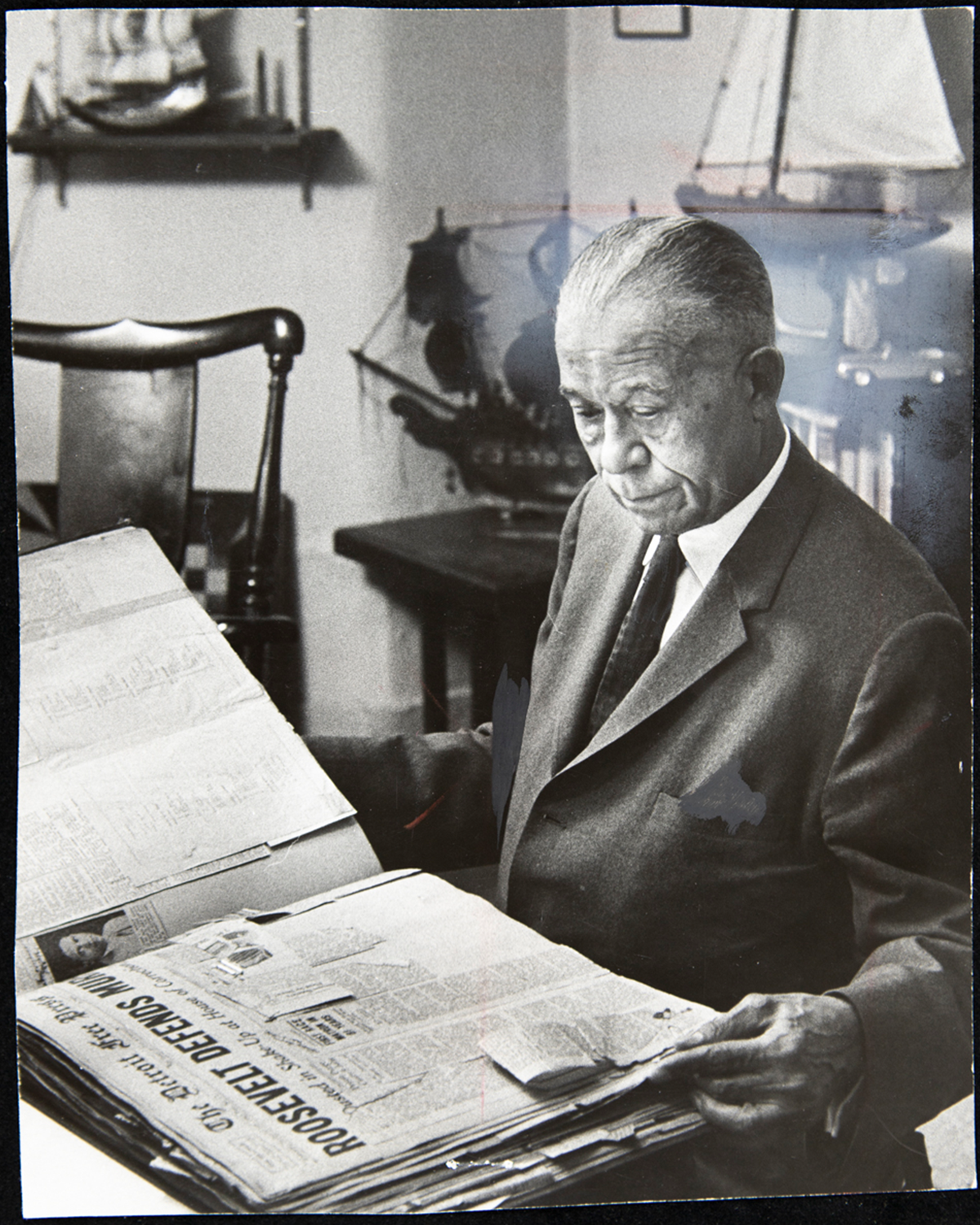
John C. Dancy, Executive Director of the Detroit Urban League, looking through a scrapbook, May 1966 / THF620105
Often blurring the lines between photo albums and journals, this craft typically takes the form of collecting paper items and selectively deciding what will be adhered into a blank book, where it will be placed, and why. Although it has taken different forms until reaching what we think of as a scrapbook today, this craft has been practiced for hundreds of years progressing hand in hand with the timeline of printing technology and availability of commercial goods.The widespread availability of scrapbook supplies from the 20th century and beyond proves that the books are still a popular means of expressing our personal wishes to capture parts of life.
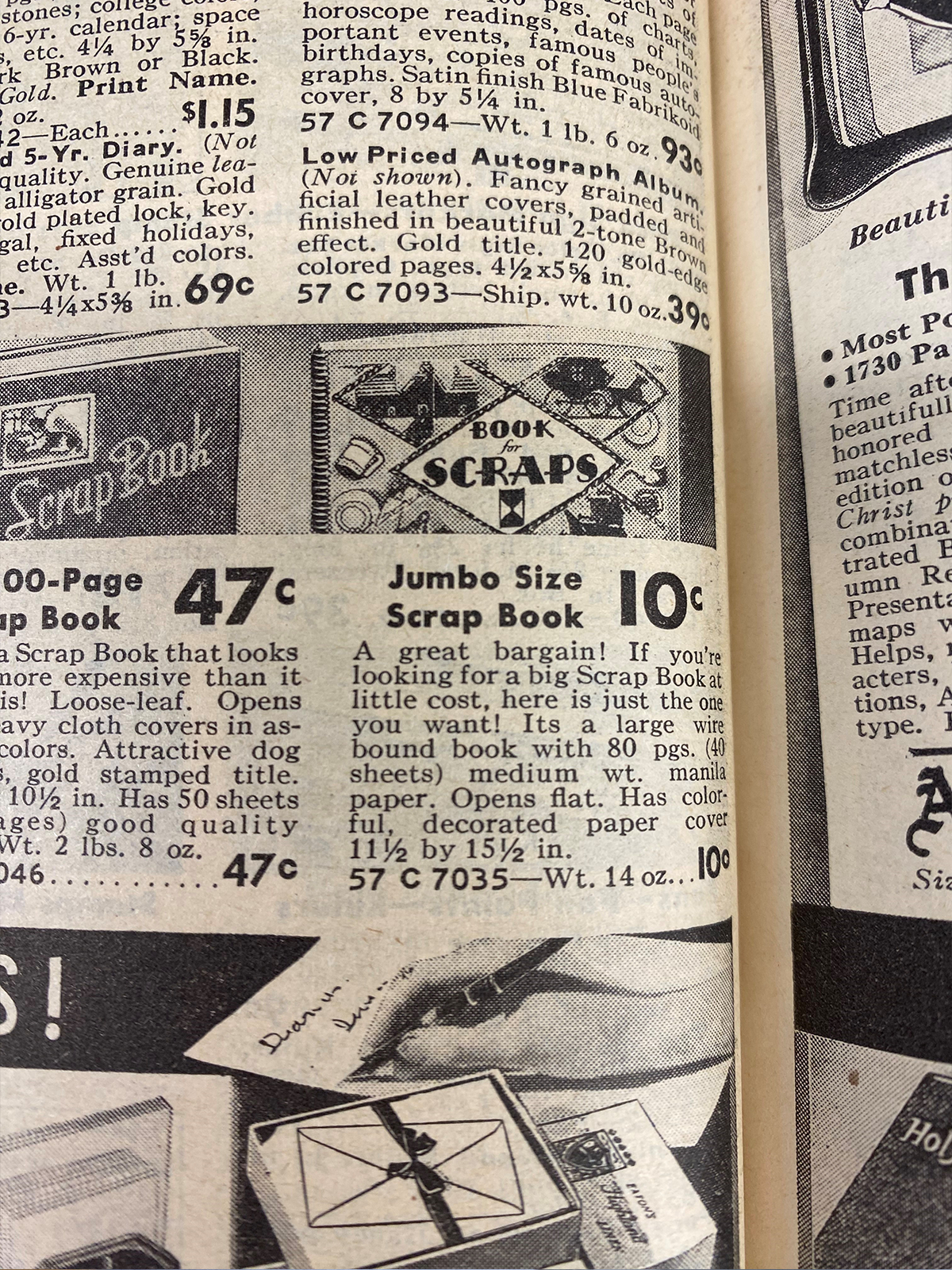
Advertisement for a ready-made blank scrapbook, Montgomery Ward 1938 catalog. P.B. 1938 / Image by Mollie Gordier
Just like their subject, scrapbook creators vary greatly as well. Housewives, children, businessmen, scientists, and so on have gotten into the “scrap book habit.” The Henry Ford is fortunate to have a wide-ranging collection of scrapbooks showcasing this diversity. Following are some examples.
Eva Tanguay, a vaudeville actress who took the country by storm, wished to document the newspaper clippings highlighting her performances at the American Music Hall in Chicago, Illinois, on May 18-31, 1913. As public coverage of her work was important to her, even the criticisms made their way into this memory capsule.
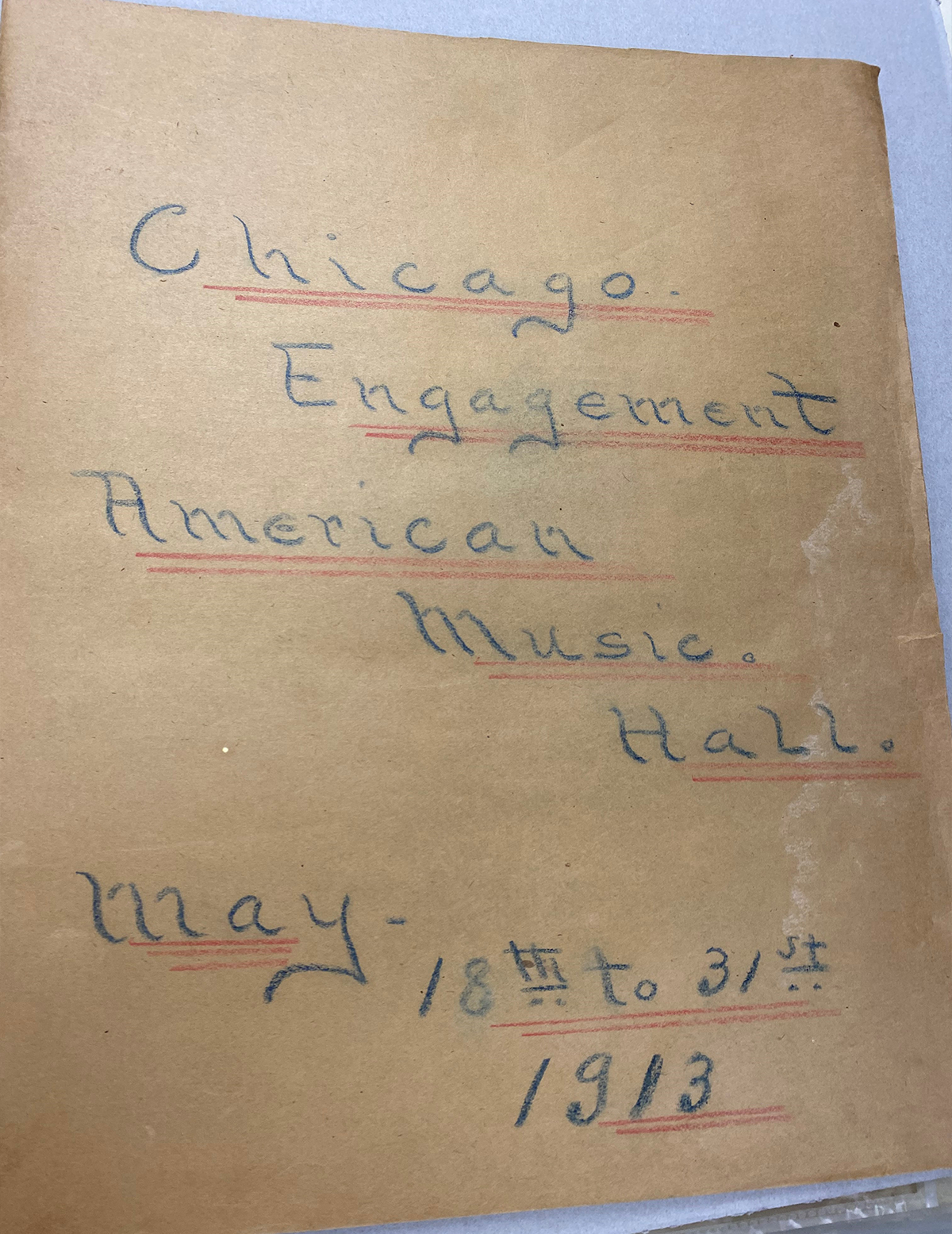
Cover of a scrapbook made by Eva Tanguay. 2005.100, Box 9 / Image by Mollie Gordier
World's Fairs were monumental events where people could experience new innovations, art, and the grandeur of architectural structures from around the world. For the 1939 New York World’s Fair, two Edison Institute teachers and their wives were sent along with students to the event for the summer. Hazel June Ebel, the wife of one teacher, compiled some memorable pictures of that experience.
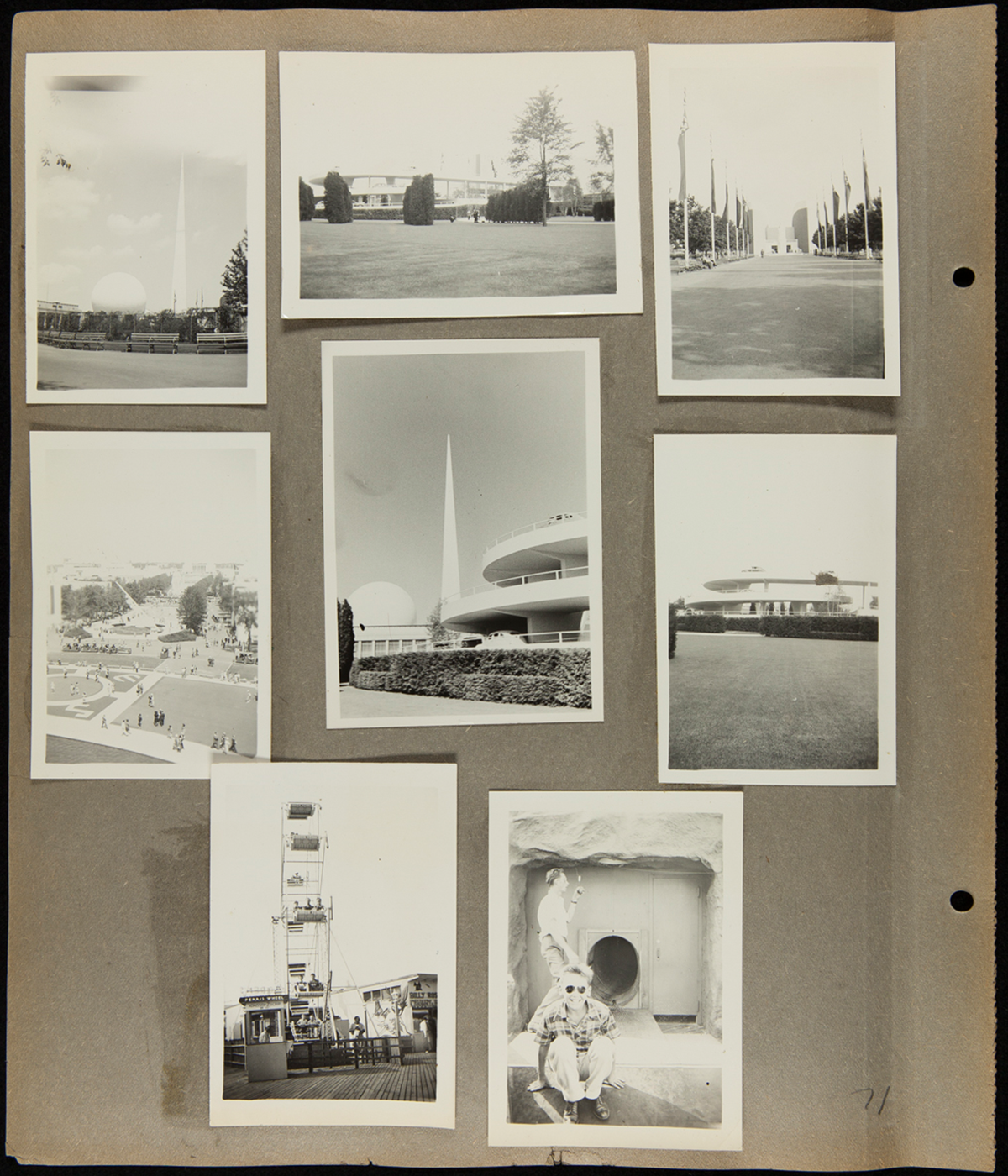
Page from a scrapbook compiled by Hazel June Ebel, 1939 / THF245988
Other scrapbooks aspired to capture momentous periods in time, such as the one created by Montgomery City Lines bus company supervisor, Charles “Homer” Cummings. Cummings went about compiling newspaper articles detailing the first few months of the Montgomery bus boycott that was sparked by Rosa Parks and her refusal to give up her bus seat in 1955.
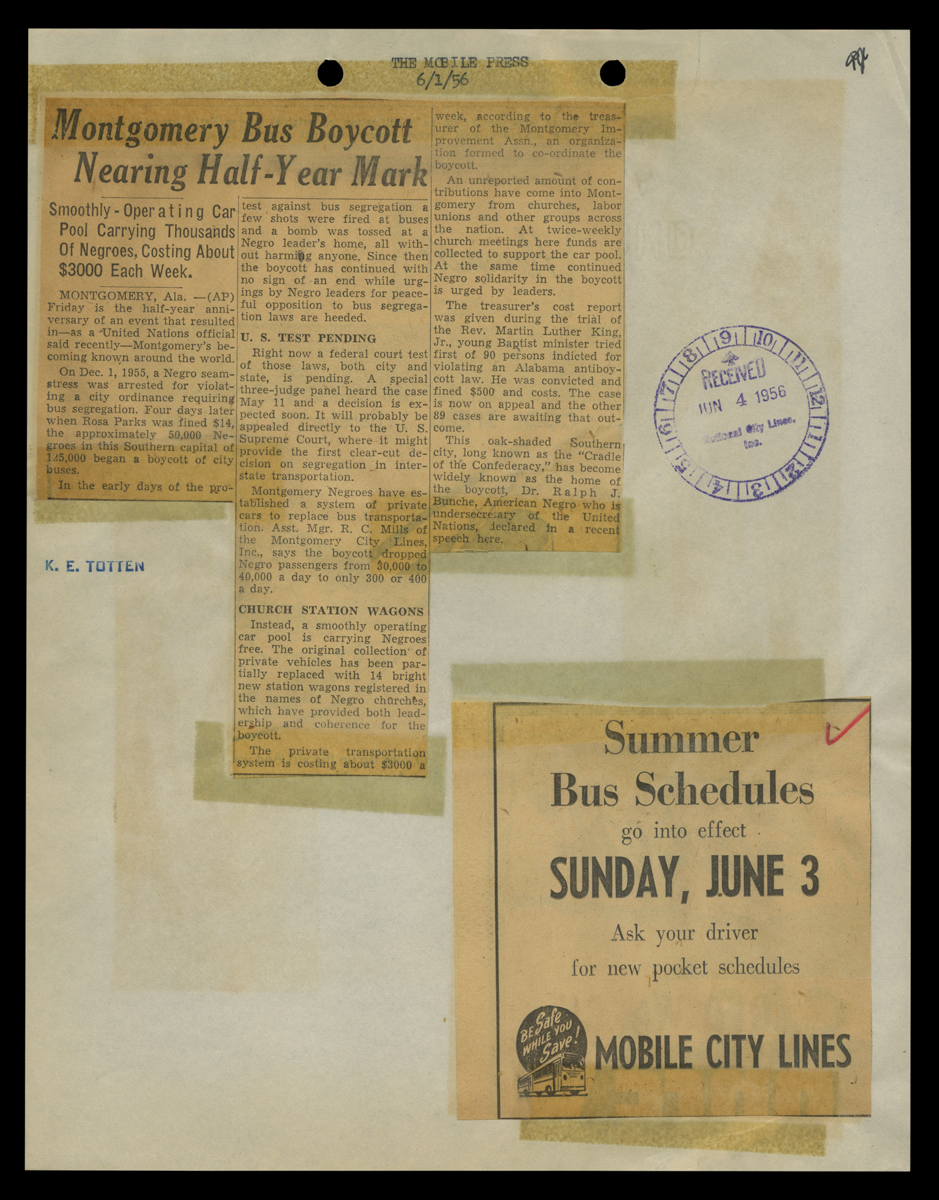
Page from the Montgomery Bus Boycott Scrapbook created by Charles H. (Homer) Cummings, November 1955-April 1957 / THF147439
Travel adventures were also exciting subjects to include in a scrapbook, particularly travel by automobile. This opportunity for rugged independence was gaining plenty of steam by the 1920s as more people purchased automobiles and roads became less like bumpy paths. This 1938 scrapbook showcases mementos documenting restaurants eaten at, hotels stayed in, routes taken, postcards collected, and movies seen.
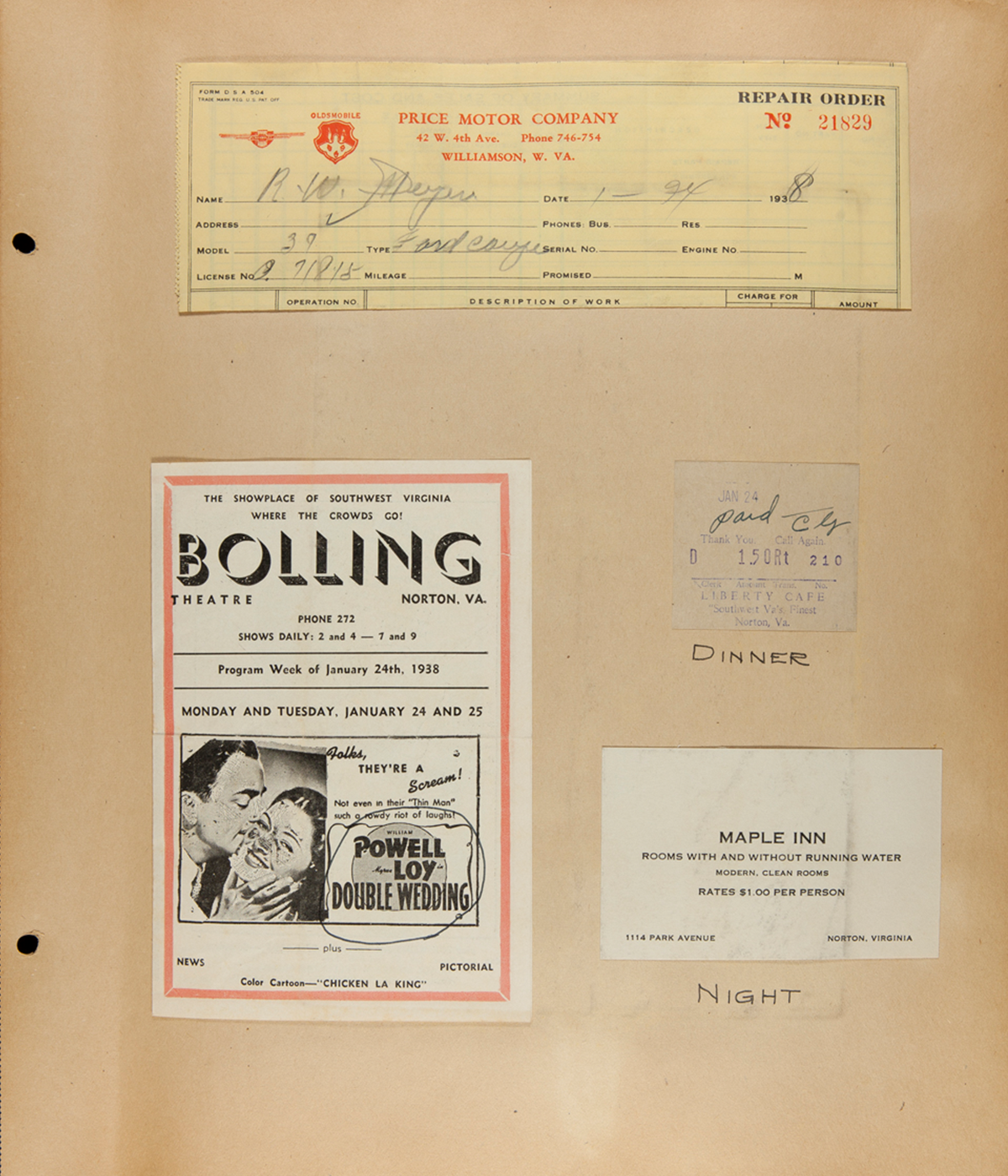
Page from a travel log of an automobile round trip from Saginaw, Michigan, to Miami, Florida, January 21-February 27, 1938 / THF240831
Scrapbooking is not only for the individual. Companies and organizations also partook in this craft, using it for product design, business documentation and recordkeeping. As is the case with the Heinz company, where they wanted to document some of the various food items they produced by creating a scrapbook with some of their early twentieth century product labels.
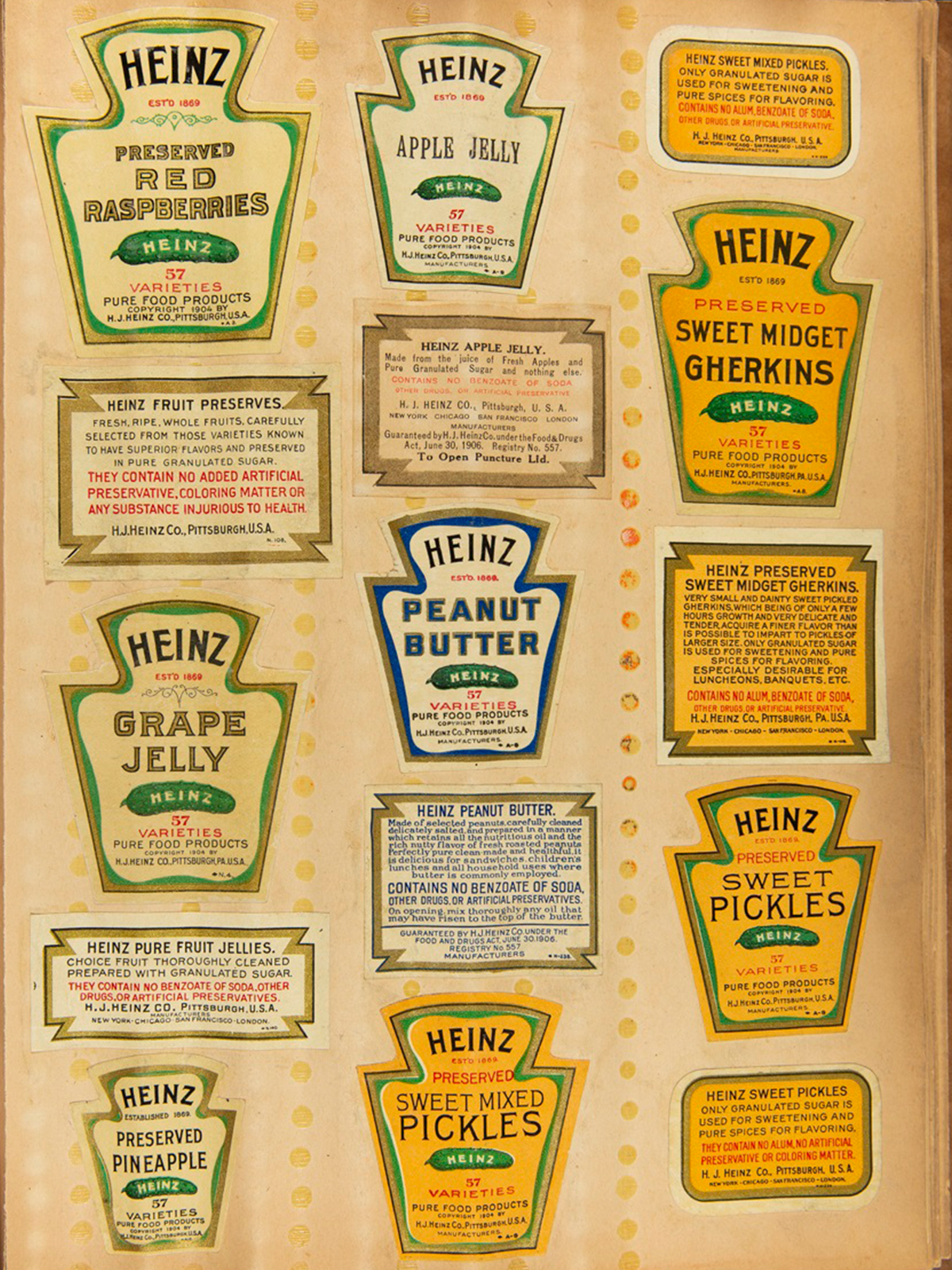
Page from a Heinz scrapbook containing Heinz product labels, 1900-1930 / THF293440
While many scrapbooks have an individualized touch or are completely improvisational, commercially constructed scrapbooks made with prompts ready to be filled out by the user were also available. Such as this 1999 “Nickellennium” scrapbook created for the television channel Nickelodeon to document the global lived experience of young people bringing in a new millennium. This book provided sections with questions or open-ended sentences for people to record what their lives were like at the moment while also envisioning what life would look like in the future. As an extra bonus, this scrapbook was produced in conjunction with a 5-hour world-broadcast documentary that aired for 24 hours on January 1, 2000 to document what young people all over the world had to say about what a Y2K era would bring.
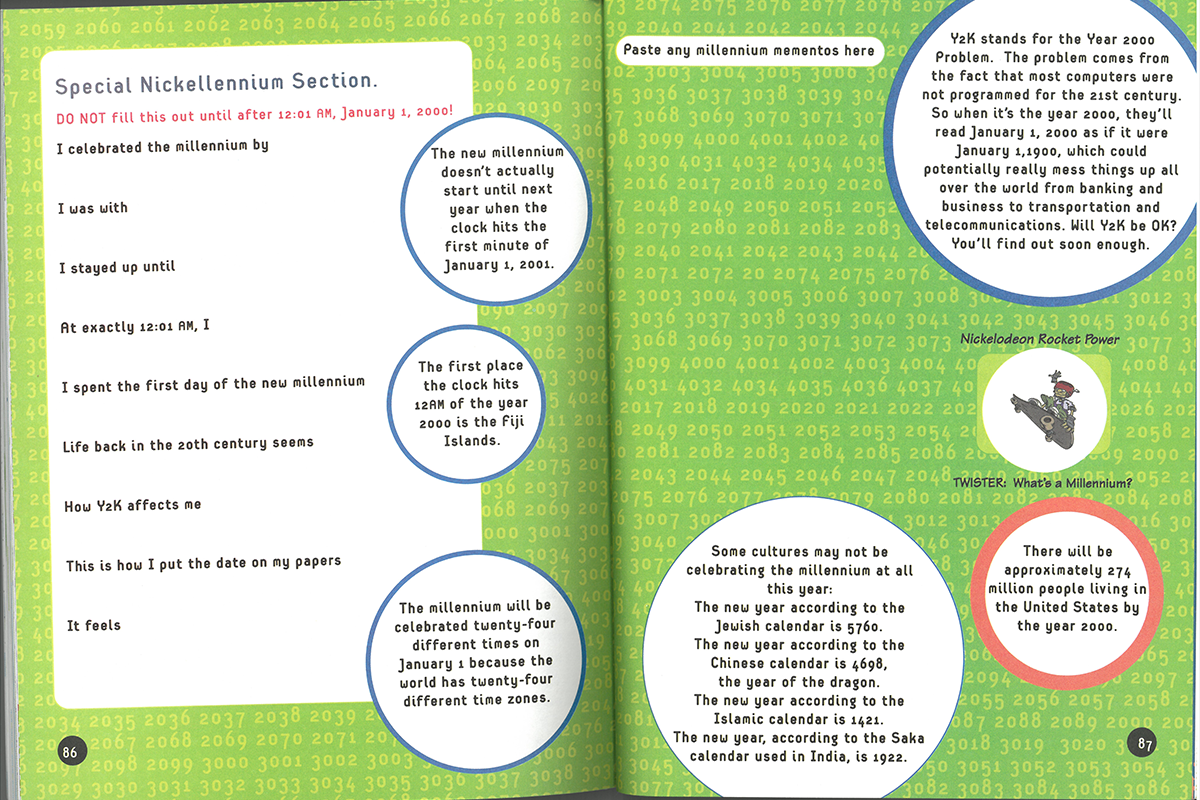
Pages from the Nickellennium scrapbook. 808.883 O32 1999. / Image by Mollie Gordier
With technological advances, scrapbook forms have transformed as well. One example is audio scrapbooks, such as this one containing various recordings of Ernie Harwell’s time as a baseball announcer from 1948 to 2002. Another example would be the entirely digital scrapbooks now available through online companies.
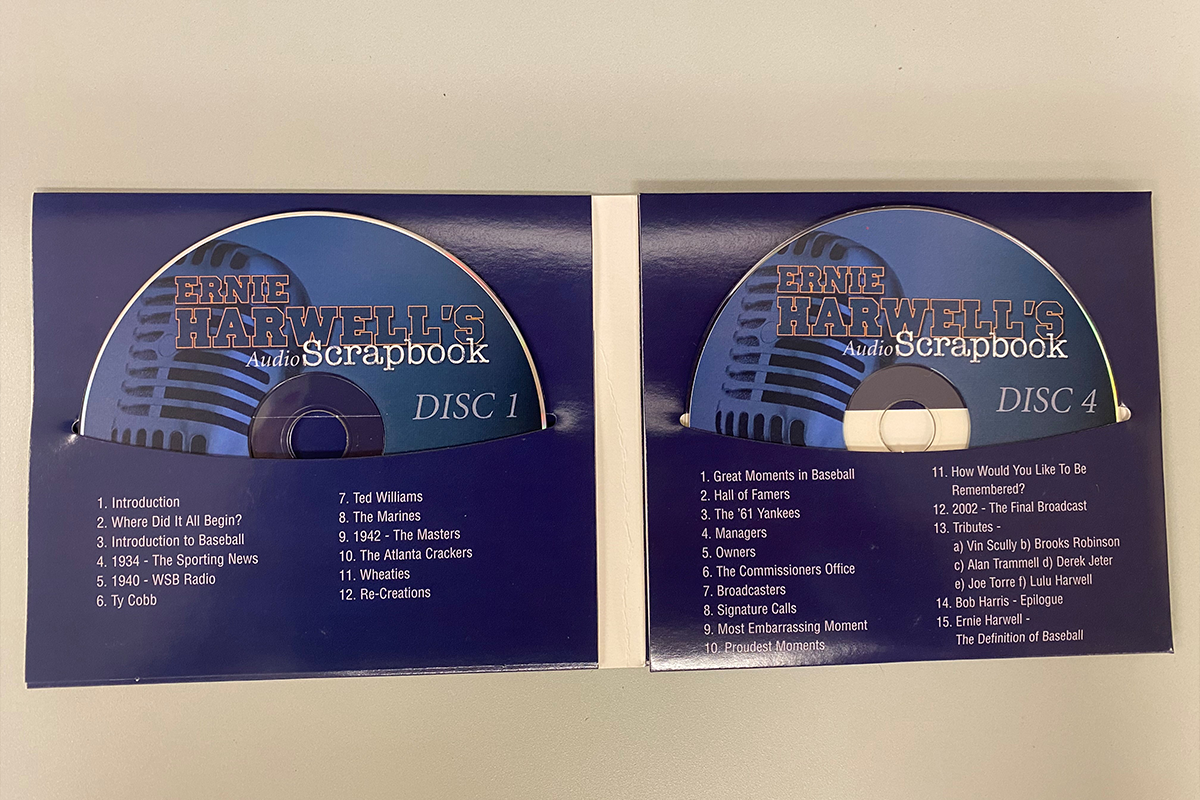
Inside case view of Ernie Harwell’s Audio Scrapbook. 796.357 H343 2006 CD. / Image by Mollie Gordier
While providing people a way to record physical materials and their significance, scrapbooking historically has also been a way to build communal experiences. There have been scrapbook contests, international school classroom scrapbook exchanges, scrapbooks made for organizations, and even stores dedicated to scrapbook supplies and learning.
Overall, whether crayons and construction paper were used or a store-bought book had ornate Victorian advertisements of cats dancing pasted throughout, scrapbooks have had a long and varied existence.
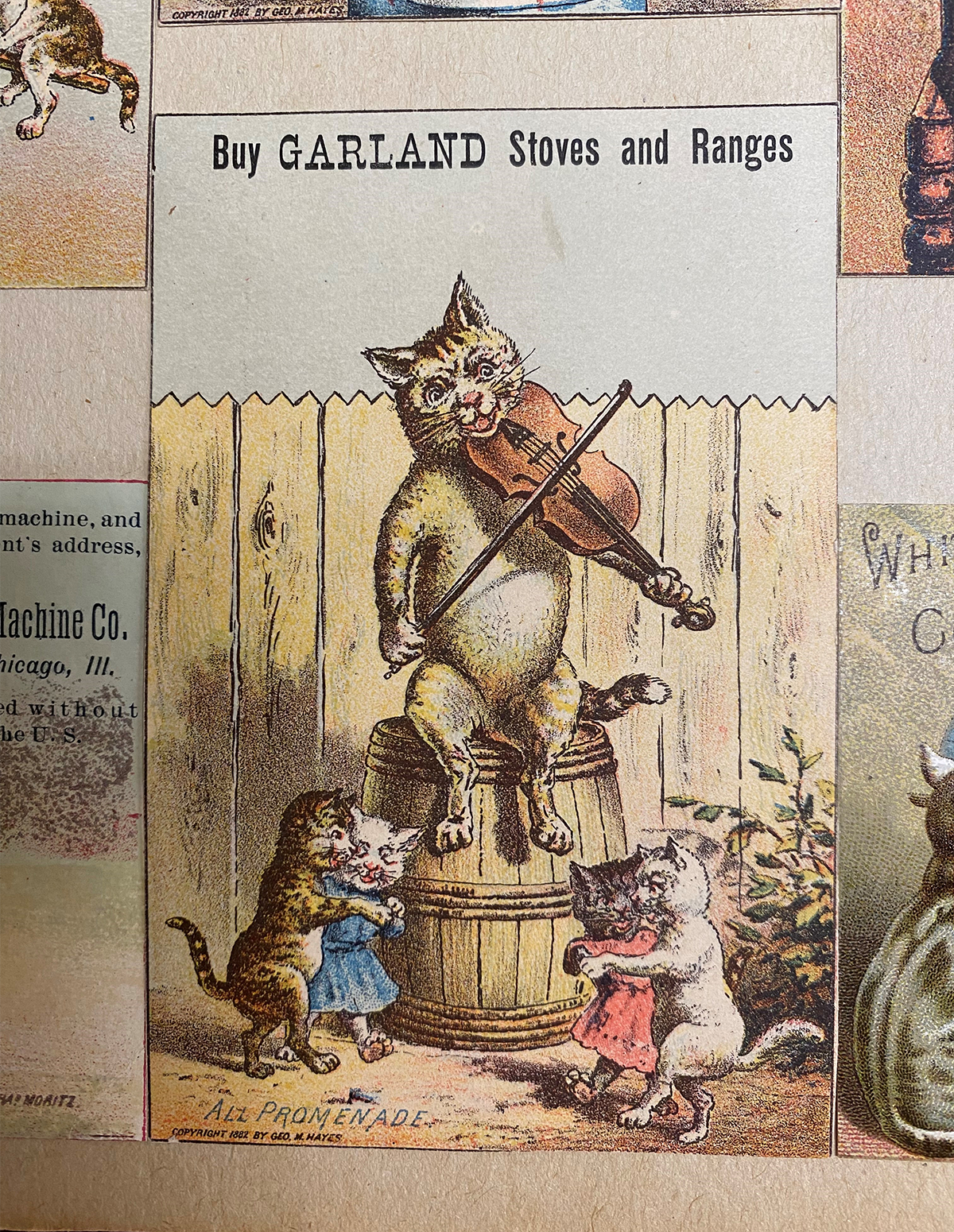
One of many decorative advertisements within a scrapbook created by Carree O’Keefe, circa 1895. 58.7.29. / Image by Mollie Gordier
For more information on the scrapbook material or any of our other collections, please reach out to the staff of the Benson Ford Research Center at research.center@thehenryford.org

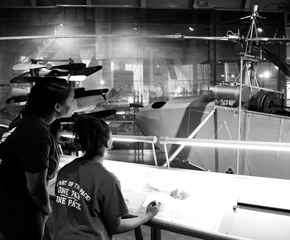
Facebook Comments